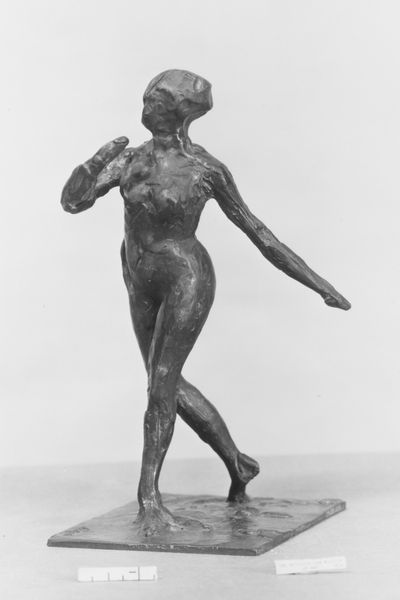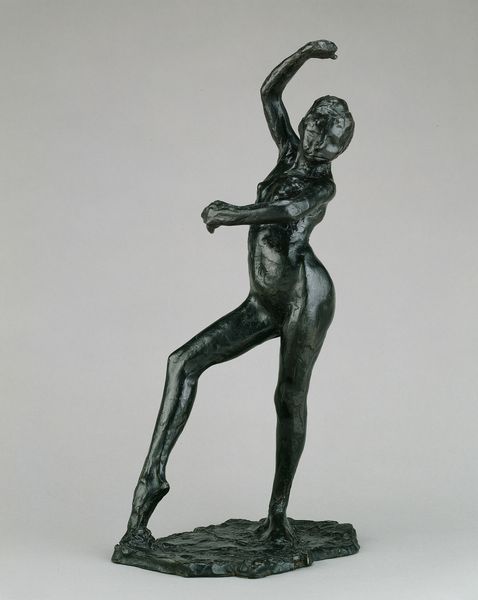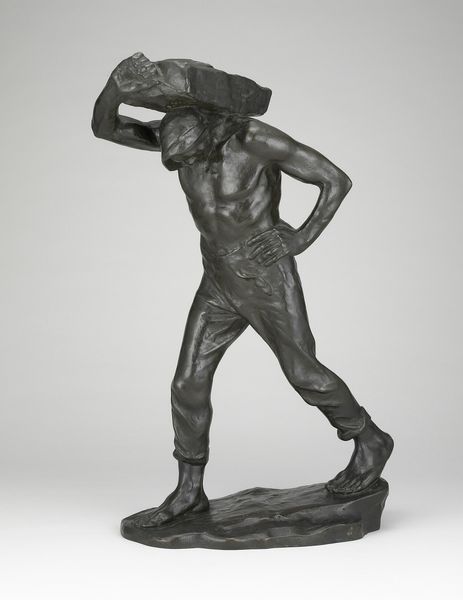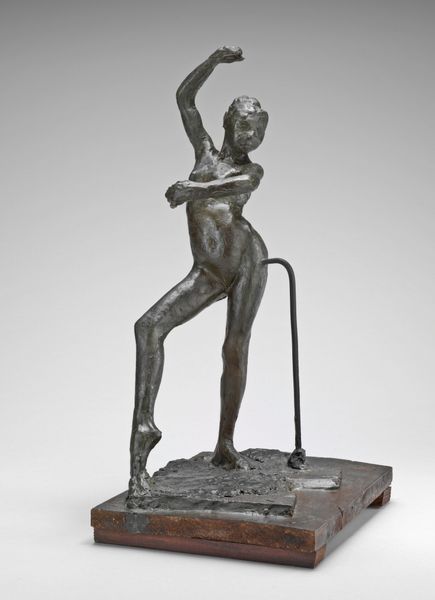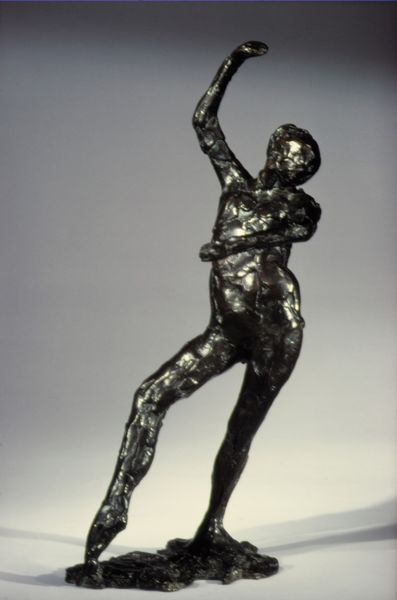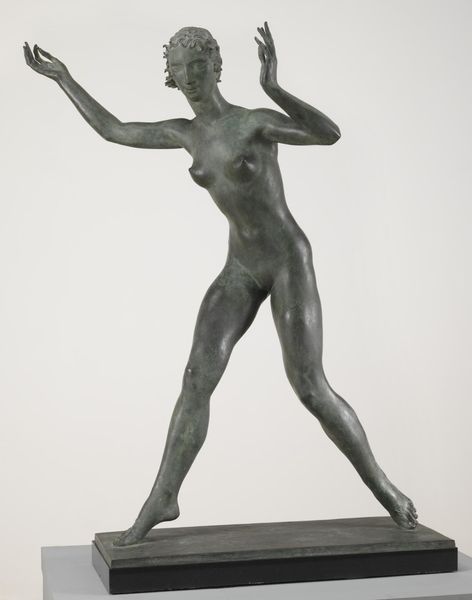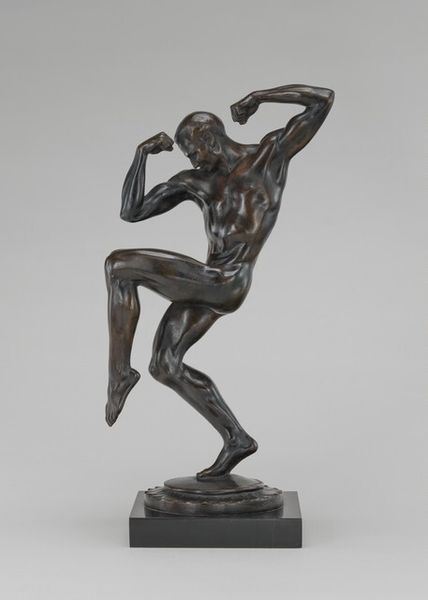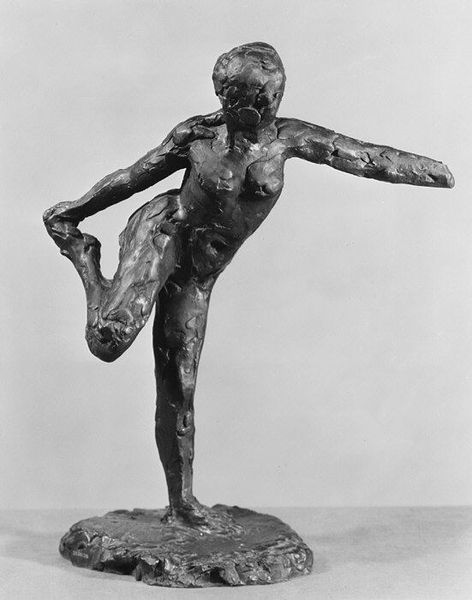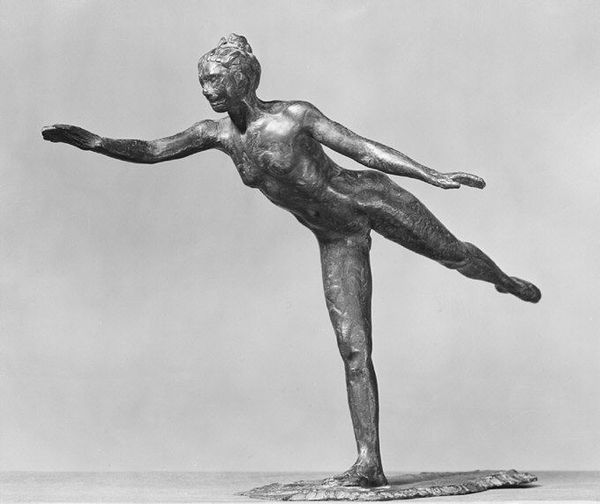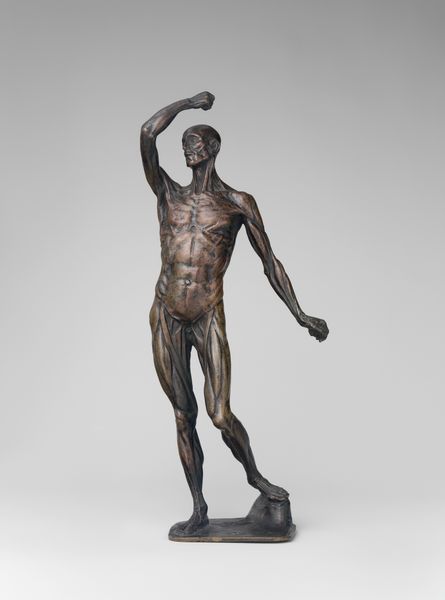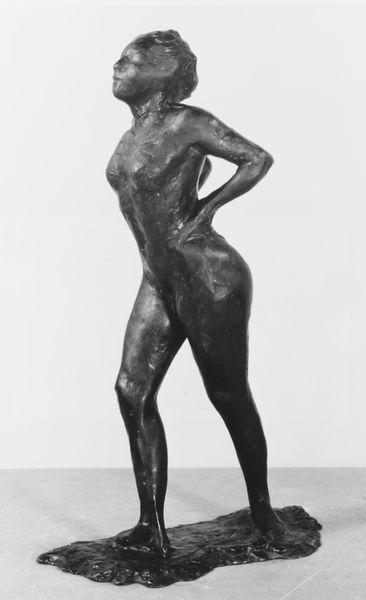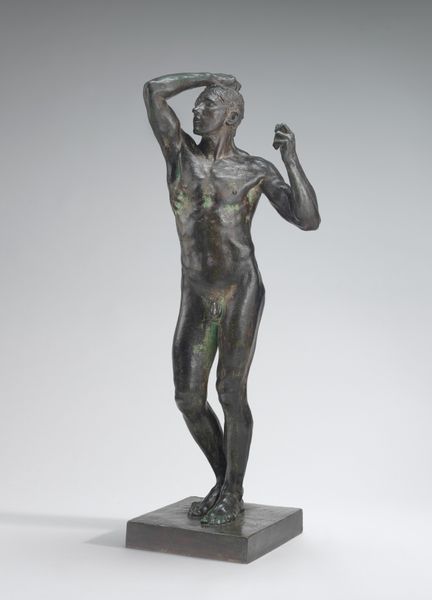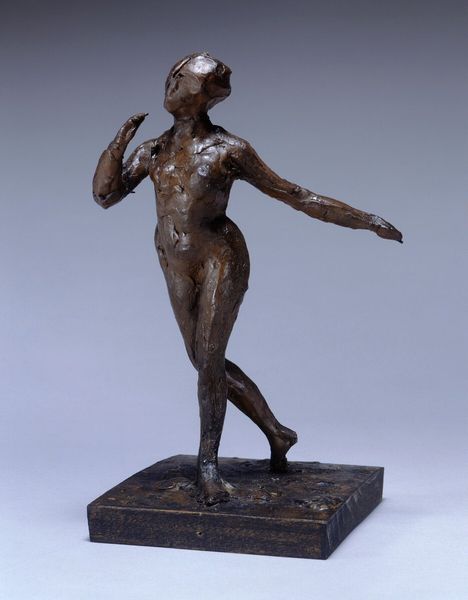
Dimensions: Overall: 8 13/16 × 4 1/2 × 6 1/2 in. (22.4 × 11.4 × 16.5 cm)
Copyright: Public Domain
Curator: Let's turn our attention to Degas's "Dancer Bowing," a bronze sculpture estimated to have been worked on between 1873 and 1920. What springs to mind for you? Editor: The way light clings to the contours. The bowing figure creates such intimate shadows. I get a sense of weariness mixed with determined discipline. Curator: The bronze itself invites an examination of labor. Think of the foundry workers, the lost wax casting process…Degas, though fascinated by the elite world of ballet, engaged deeply with industrial practices, wouldn't you say? It collapses conventional artistic boundaries. Editor: Exactly! And in her posture, you see all the labor, but there is also release. Her bow suggests something of an offering or a curtsy, it suggests the relationship of performers to their patron, perhaps to their craft as well. Curator: I'm drawn to the fact that, at first, many of Degas's sculptures were modeled in wax, often tinted, and sometimes dressed in actual fabric! He was capturing fleeting moments. Later they were cast in bronze. This particular piece, the second state of the figure, loses some of that ephemerality in bronze. The transformation, if you will. Editor: True. There's a permanency here but what the casting gains in material presence, it risks losing some of the lightness. Tell me, does knowing that these bronzes were posthumous casts—he didn't originally intend them as such—alter your perspective on them? Curator: Oh, immeasurably! It adds another layer of complexity. We are then faced with choices of the foundries that made them, often many years after Degas's passing, whose vision are we engaging with? I ponder, can we know Degas fully in this way? Or are these ghostly echoes, materialized, interpretations in a sense. Editor: A question of value too, maybe? Transforming a humble material like wax into something precious. Well, it seems we both find ourselves bowing to the rich depths in what might at first glance appear to be a straightforward form. Curator: Indeed. Degas, forever challenging our gaze.
Comments
No comments
Be the first to comment and join the conversation on the ultimate creative platform.
